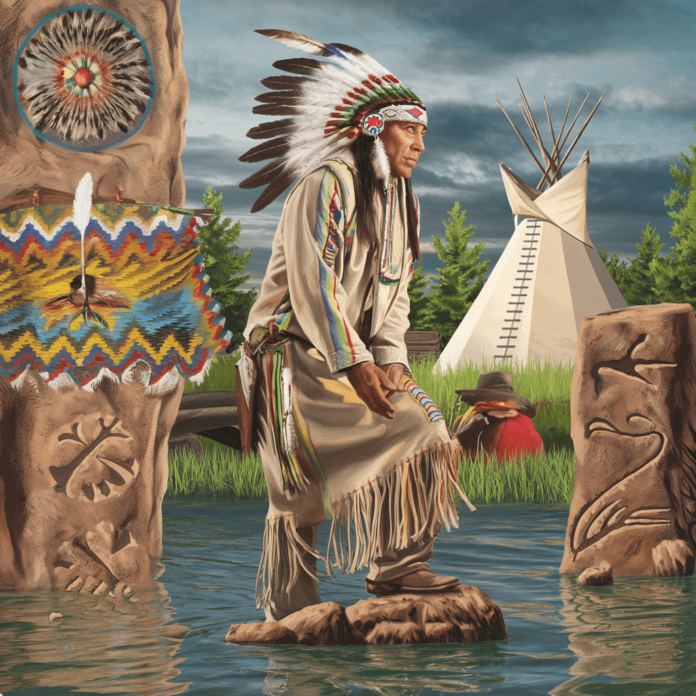Introduction
Hank Adams is a name that resonates deeply within the Native American community and beyond. An Assiniboine-Sioux, Adams was a pivotal figure in the civil rights movement for Native Americans, playing a crucial role in mediating conflicts and advocating for the rights and sovereignty of Indigenous peoples. His work has left an indelible mark on the history of Native American activism, particularly during the tumultuous era of the 1960s and 1970s.
Hank Adams, an Assiniboine-Sioux, played a crucial role in resolving conflicts between Native Americans and the federal government during the takeover of Alcatraz and other significant protests.
This article delves into the life, achievements, and legacy of Hank Adams, exploring his contributions to the Native American rights movement and his enduring impact on contemporary society. By examining his work through a comprehensive lens, we aim to provide a resource that not only informs but also inspires readers to understand the significance of his efforts.
Early Life and Background
A Deep Connection to His Roots
Hank Adams was born in 1943 on the Fort Peck Indian Reservation in Montana, home to the Assiniboine and Sioux tribes. Growing up, Adams was deeply influenced by the stories of his ancestors and the struggles they faced. This connection to his heritage instilled in him a profound sense of duty to advocate for the rights of his people.
Education and Early Activism
Adams pursued his education with the understanding that knowledge was a powerful tool for change. He attended the University of Washington, where he became increasingly involved in activism. His early work included organizing protests and educational campaigns to raise awareness about the injustices faced by Native Americans.
The Fish Wars and the Boldt Decision
The Struggle for Fishing Rights
One of Adams’ most notable contributions was his involvement in the “Fish Wars” of the 1960s and 1970s. These were a series of protests and legal battles over the rights of Native American tribes in Washington State to fish in their traditional waters. The state government had imposed restrictions that violated treaties signed in the 19th century, leading to widespread unrest.
The Boldt Decision
Adams played a crucial role in the events leading up to the landmark 1974 Boldt Decision, which reaffirmed the rights of Native American tribes to fish in their traditional waters and allocated them 50% of the annual catch. This decision was a significant victory for Native American rights and set a precedent for the interpretation of treaty rights in the United States.
The Occupation of Alcatraz
A Defining Moment in Native American Activism
In 1969, Adams was involved in one of the most iconic events in the history of Native American activism: the occupation of Alcatraz Island. The occupation was a protest against the U.S. government’s policies towards Native Americans, particularly the termination policy, which sought to assimilate Native Americans into mainstream society and dissolve their sovereign status.
Adams’ Role in the Occupation
While not physically present on the island, Adams was instrumental in the planning and execution of the occupation. He provided critical support, including legal advice and media relations, which helped to bring national attention to the plight of Native Americans. The occupation lasted for 19 months and is considered a turning point in the struggle for Native American rights.
Advocacy for Sovereignty and Treaty Rights
The Trail of Broken Treaties
In 1972, Adams was a key organizer of the Trail of Broken Treaties, a cross-country caravan that culminated in a week-long occupation of the Bureau of Indian Affairs (BIA) headquarters in Washington, D.C. The protest sought to address the U.S. government’s long history of broken treaties with Native American tribes and demanded reforms to the BIA.
Negotiations and Outcomes
Adams’ skills as a negotiator were put to the test during the Trail of Broken Treaties. He worked tirelessly to ensure that the voices of Native Americans were heard and that their demands were taken seriously. The protest resulted in the submission of a 20-point position paper, which laid out the grievances of Native Americans and called for the restoration of treaty rights and sovereignty.
Legacy and Impact
A Lifelong Commitment to Justice
Hank Adams’ legacy is one of unwavering commitment to justice for Native Americans. Throughout his life, he remained a staunch advocate for the rights of Indigenous peoples, never shying away from challenging the status quo. His work has inspired countless others to continue the fight for equality and justice.
Recognition and Awards
Adams received numerous accolades for his work, including the American Indian Distinguished Service Award. Despite the recognition, Adams remained humble, always emphasizing that the fight for Native American rights was a collective effort.
FAQs About Hank Adams
Q: What is Hank Adams best known for?
A: Hank Adams is best known for his role in the Native American civil rights movement, particularly his involvement in the Fish Wars and the occupation of Alcatraz.
Q: What impact did the Boldt Decision have?
A: The Boldt Decision was a landmark ruling that reaffirmed the fishing rights of Native American tribes in Washington State, granting them 50% of the annual catch and setting a precedent for the interpretation of treaty rights in the U.S.
Q: How did Hank Adams contribute to the occupation of Alcatraz?
A: Adams provided critical support during the occupation, including legal advice and media relations, which helped bring national attention to the protest.
Q: What was the Trail of Broken Treaties?
A: The Trail of Broken Treaties was a cross-country protest in 1972 that culminated in the occupation of the Bureau of Indian Affairs headquarters in Washington, D.C., highlighting the U.S. government’s history of broken treaties with Native American tribes.
Conclusion
Hank Adams was a trailblazer in the fight for Native American rights, using his intelligence, perseverance, and dedication to advocate for his people. His efforts have had a lasting impact on the legal and social landscape for Native Americans in the United States. By understanding and honoring his legacy, we can continue to push for justice and equality for all Indigenous peoples.




